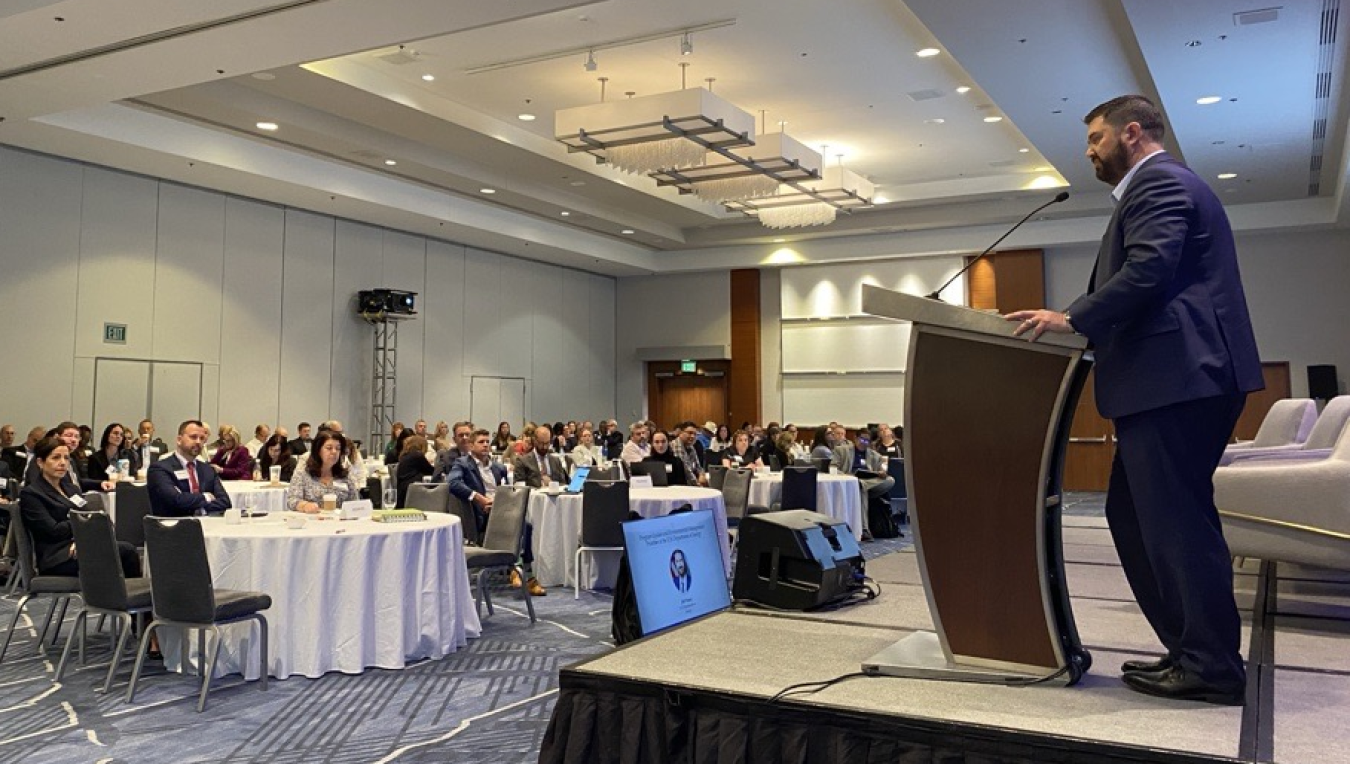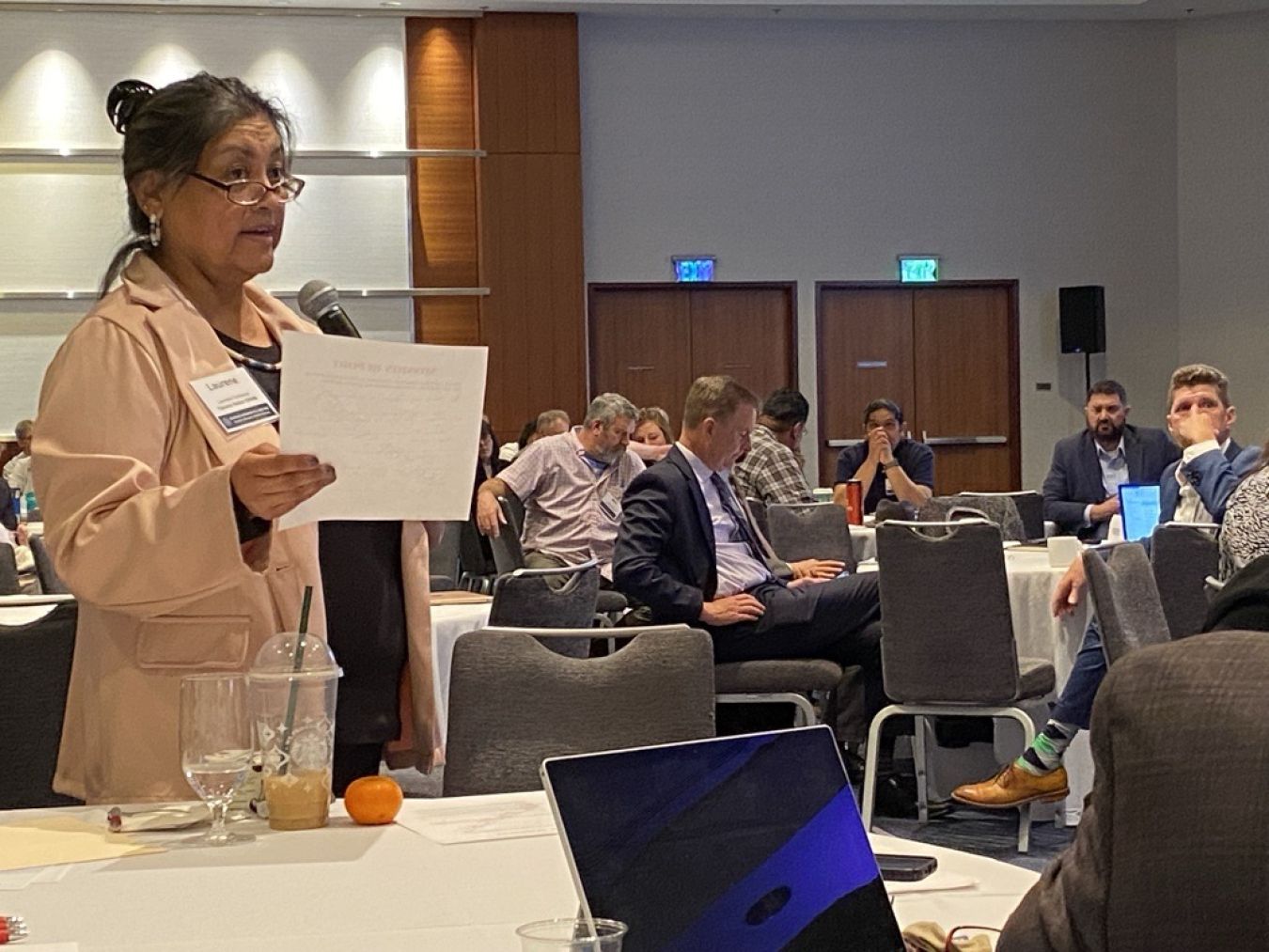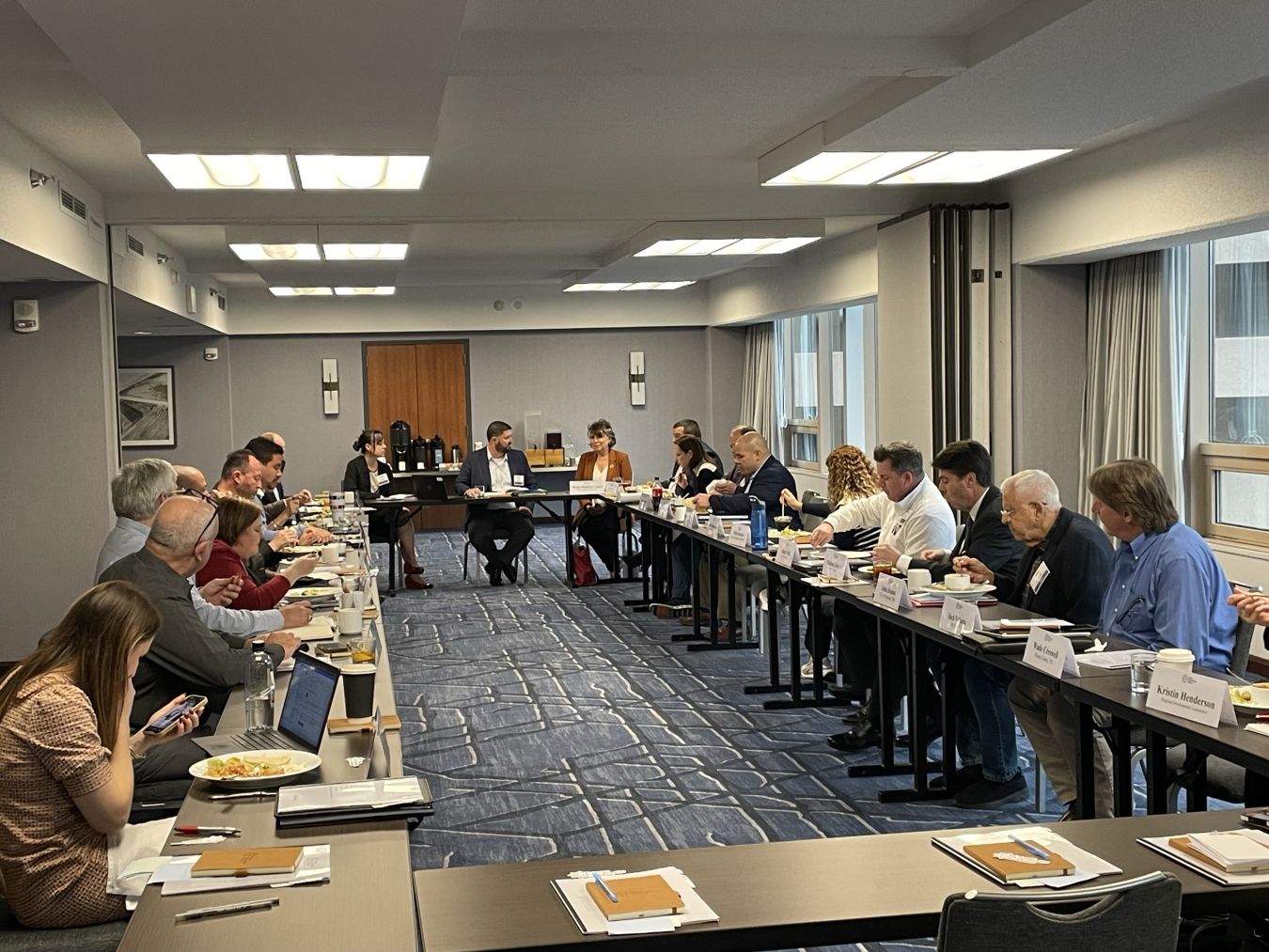The 22nd Annual Intergovernmental Meeting with the U.S. Department of Energy on Nuclear Weapons Waste Cleanup brought together EM, local, state and tribal officials from across the country last week to discuss how they can advance the cleanup mission.
Office of Environmental Management
November 21, 2023
MINNEAPOLIS — The 22nd Annual Intergovernmental Meeting with the U.S. Department of Energy on Nuclear Weapons Waste Cleanup brought together EM, local, state and tribal officials from across the country last week to discuss how they can advance the cleanup mission.
EM and other DOE senior leaders participated in discussions about a variety of topics, including priorities, strategic communications, technology innovation, waste transportation, climate resiliency, cleanup budgets and reuse of former DOE land.
EM officials addressed questions and concerns and provided updates on the status of cleanup at the 15 remaining sites, planning for the future workforce, clean energy development opportunities, protection of cultural and historical landscapes, and an emerging contaminant migrating into the environment from chemicals used in all types of materials called per- and polyfluoroalkyl substances (PFAS). Attendees also participated in an interactive budget development exercise.
In his plenary address, EM Principal Deputy Assistant Secretary Jeff Avery reflected on his first year at EM and noted that the cleanup program’s success is due to the efforts of many, including stakeholders and their meaningful engagement and input.
“EM is fortunate that our sites are surrounded by, truly, a cadre of leaders who understand the cleanup mission and have always been ready to pitch in,” said Avery. “Your communities have served our nation for decades in support of national security. Your communities also hold great potential for helping to solve the most pressing challenges as we look ahead — preserving peace, boosting clean energy, creating good paying jobs and protecting environmental and cultural resources.”

Avery highlighted significant accomplishments, including the startup of the Integrated Waste Treatment Unit at the Idaho Cleanup Project; the safe and successful demolition of the first gaseous diffusion process building at the Portsmouth Site; and treatment of tank waste at the Hanford Site.
And just like safety, engagement requires constant vigilance and two-way communication, Avery noted.
“We are continuously looking for ways to strengthen relationships through open channels of communication and trust,” he said. “Of course, these conversations are not always easy. And there will not always be agreement across the board. But having the ability to address tough questions, appreciate different perspectives and have frank conversations can really make all the difference in the world.”
And that is exactly the intent of the two-and-a-half-day meeting that drew about 200 participants.

The annual meeting is a forum for state, local, tribal and federal officials to discuss priorities and strategies for managing and storing defense nuclear waste and for remediation of production sites. It's a collaborative effort led by the National Governors Association Federal Facilities Task Force, and national intergovernmental groups partnering in, and affected by, the ongoing cleanup of defense related nuclear waste, including the:
- Energy Communities Alliance;
- Environmental Council of the States;
- National Association of Attorneys General; and
- State and Tribal Governments Working Group, convened by the National Conference of State Legislators.
Looking to the future, Avery discussed EM’s upcoming 2024-2034 Strategic Vision, which serves as a planning tool and framework of priorities for overcoming remaining challenges and achieving more cleanup in the coming decade. He encouraged the intergovernmental community to provide feedback in advance of the document’s release.
To receive the latest news and updates about the Office of Environmental Management, submit your e-mail address.

